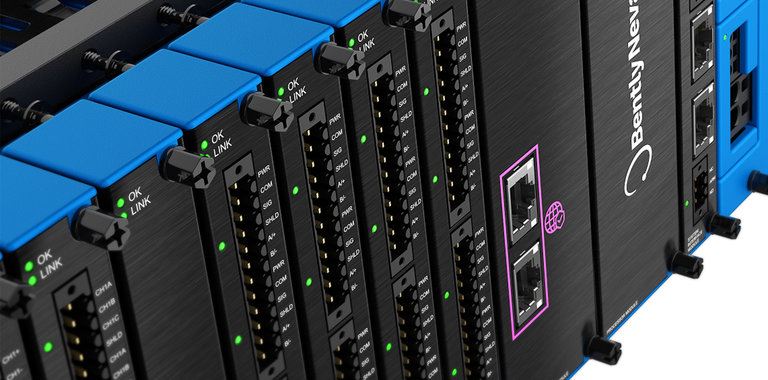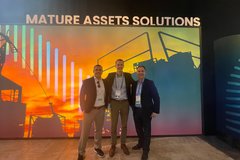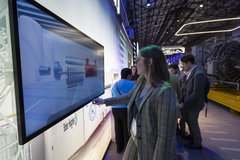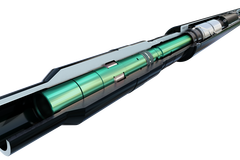- Q&A with Steven Sturm about the launch of the Orbit 60 series. Steve is a Product Manager for Bently Nevada, Digital Solutions division. He has been working for Baker Hughes for 29 years.
Q: Steve, thanks for your time today. I realise it’s been a hectic few weeks with the recent new product launch. When we look at new Tech innovation in the case of the new Orbit 60 series, what exactly is the true innovation with this product that you can highlight?
So let’s start with the baseline. We provide solutions for machine protection and condition monitoring. First of all, protecting a machine: our tech is operating inside the control network. When a machine has a problem, like a vibration issue for example, we can alert the operator to shut it down, or the control systems to do it automatically. This has to be very cyber secure, so no one can hack into the system and shut the machine down without the operator’s authorisation or knowledge.
The other aspect of what we do is Condition Monitoring. We provide a lot of data about the machinery health for longer-term planning of shut downs—either a year from now, or an intermediary maintenance programme. For the kind of information we provide, an awful lot of data is needed to provide that information, but it is all coming from the same place where we do the protection of the machine. So the main difference with this new tech, compared to previous ones, and from our competitors’, is that we have separated the protection system from the condition monitoring system with an internal data diode. The part of the system doing condition monitoring can see all the data that is inside the protection rack, including process data from the control system. It can see it all and listen, but it can’t ‘talk’. So that part of the system doing condition monitoring is intrinsically cyber secure. Even if someone hacked into that part of the system, they couldn’t go any further. This is one of the biggest advantages from the previous tech.
Secondly, in the past, we would pass data to the control system or DCS. Now the communication can be 2-way: the rack can get data from the control system, and pass important data about the health of the machine to the operator. For example, we measure temperature, vibration, and pressure with our sensors. But there might be input of flow rates or other things going on in the input or output of the machine. These other bits of information are also important to diagnose the health of the machine, and we now have access to those elements, which we can use with our software.
Our last platform was released 20 years ago. A lot has changed in this time electronically, and now perhaps we are offering almost a hundred-fold increase in processing capability in the system, with more measurements and more detailed assessments from inside of a compressor, for example.
Finally, I am really excited about the flexibility of deployment of the new system. This first release is rack-based, expandable and has the ability to share all the data between physically separate racks. It is truly modular.
In the future, a smaller distributed system will follow. This is really the start of a new platform for us and our customers.
Q: Why is this truly a game-changer for operators worldwide? What will be the customer benefits from using this new product?
Today, for cyber security reasons, many customers have to keep their condition monitoring data physically at the location site where the machinery operates, like the compression station for a pipeline operator, for example. To view this data remotely, they have to use an external device, the data diode, which in most cases would be fairly expensive, or a database replication in the system, which is also costly. This was an obstacle we needed to address. With this system, cyber security is built in. So you can access the data remotely and securely, even from a cell phone, without having to spend anything else, and without having any concerns over your protection system at all.
Q: What was it like working on the project? Did anything surprise you? What did you learn that you didn’t know previously?
We’ve been thinking about this new technology for a few years. It started with a fairly small team. First, we interviewed about 50+ customers in the past 2 years. We asked what they liked about the system, what they would like changed, and maybe even what the competition had that we didn’t.We gathered a lot of customer feedback and inputs. In parallel, you know we have a large global Bently Nevada sales and services team around the world—a lot of long-serving employees who know a lot about the technology—and we asked them ‘What could I do better for my customers.What is missing?’ They were interviewed, and we gathered group inputs. We also interviewed Bently Nevada team here at the Minden HQ with over 100 engineers, manufacturing, marketing, finance staff, and more. Everybody had input and a say in what we should look at for the next-generation product.
So, we took all that data at the definition phase of the project and as leaders from engineering and product team, we got together and came up with 10 different ideas of how the architecture of this new product should look like—from very much the same as it was, to ideas about doing it completely virtual—we measured each of those ideas against the key factors our customers had asked us to consider, weighed all those architectures and came up with a shortlist of 2 which were pretty close, and then merged those 2 into 1-. So it was a very large team effort.
Along the way, we came up with ideas about how to do cyber security in a new way, and now this method is patented. Several other patents are out there as a result, as folks came up with ideas during the process. I reckon over 1000 people came together to figure this out.
It taught me one thing: the collective intelligence of our customers and the business is really powerful.
Energy Forward Stories
Sign up to stay up to date on the latest innovations and people shaping the future of our industry.





